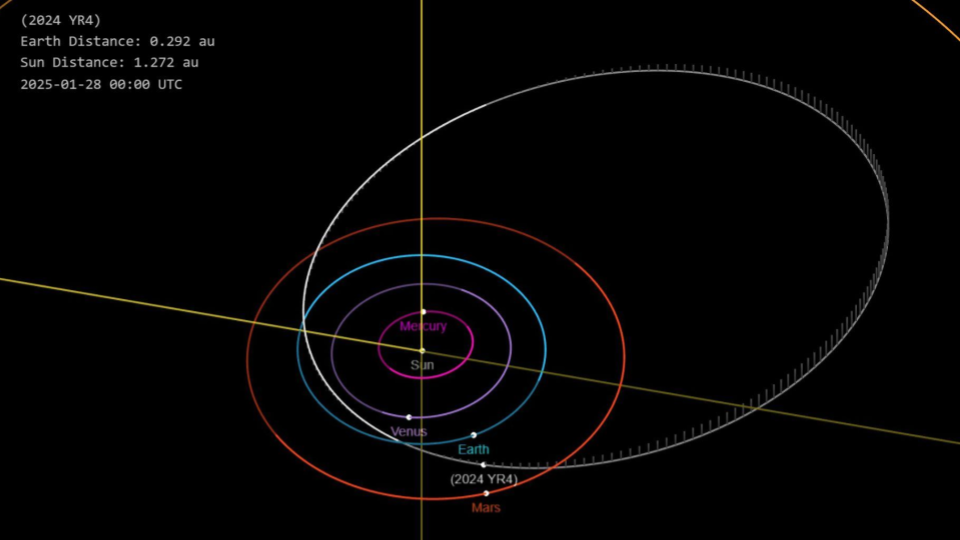
Every once in a while, the Universe likes to remind us it has the ability to kill us.
Meet asteroid 2024 YR4. Discovered in late December, it could just hit the Earth on Dec 22, 2032. Discovered by the ATLAS survey, it was initially calculated to have a 1.3% chance of hitting Earth.
And that percentage hasn’t gone down with further data.
In the past, new observations of potentially hazardous asteroids have consistently revealed lower to no chance of impact, so folks are feeling a bit uncomfortable right now.
As I write this on February 9, the risk stands at 2.25% chance of impact, and it sits at level 3 on the Torino Scale.
This means there will be: “A close encounter, meriting attention by astronomers. Current calculations give a 1% or greater chance of collision capable of localized destruction. Most likely, new telescopic observations will lead to re-assignment to Level 0. Attention by the public and by public officials is merited if the encounter is less than a decade away.”
So we’re supposed to feel uncomfortable, and we need to pay attention.
Measuring somewhere between 130 and 300 feet, or 40-90 meters wide, it is small enough to only be visible when closest to Earth, which last occurred on Dec 25 2024, and prior to that in 2016 and 2020. Researchers are now calculating all the possible orbits that can be fit through the observations taken since its discovery, and they are looking through the archives to see if they can find the asteroid somewhere on one of those paths.
So far, archival images from the Subaru telescope have failed to find the asteroid along the path of several “good, doesn’t hit Earth” orbits. More searching is being done, and a whole lot of new images are being taken as this asteroid races into the distance and fades from view.
Per their blue sky account, Andy Rivkin and his team have successfully gotten JWST to pin down the size of the asteroid so we can better plan to move if needed.
The timeline to do something isn’t very long. In 2028, when next we pass, Earth and YR4 will be about 8 million km apart, which isn’t going to allow precision radar measurements, but it will allow the orbit to be better determined. If we can get our act together, we should be able to build and launch a mission to chase down the asteroid and get the kind of observations that will help us know if it is one mostly solid object or some kind of a boulder or rubble pile. And if we’re going to need to deflect it, we may need to have options ready to launch in 2028… or earlier.
NASA and ESA have minimal experience moving asteroids thanks to the DART mission. If the will and the funding were in place, we could launch a twin in time to take advantage of the 2028 closest approach.
Here at EVSN, we will be following closely as new data comes in and decisions are made at the international level concerning how we as a planet should respond.
And if you’re in the mood to doomscroll Mother Nature, blue sky seems to be the place to scroll. Follow along on hashtag #2024YR4 for asteroid updates
